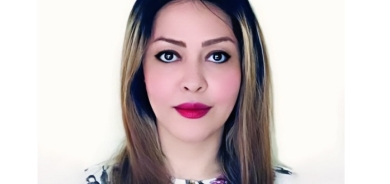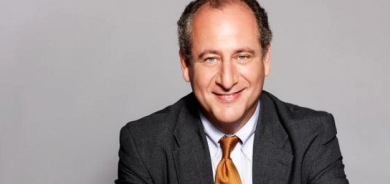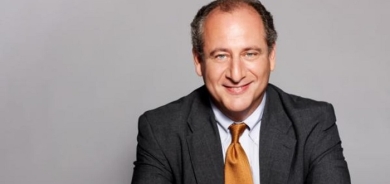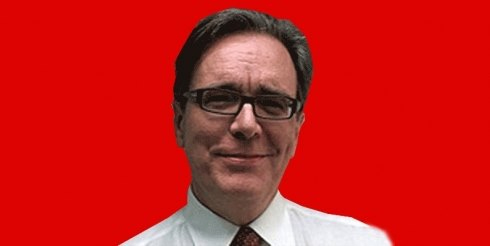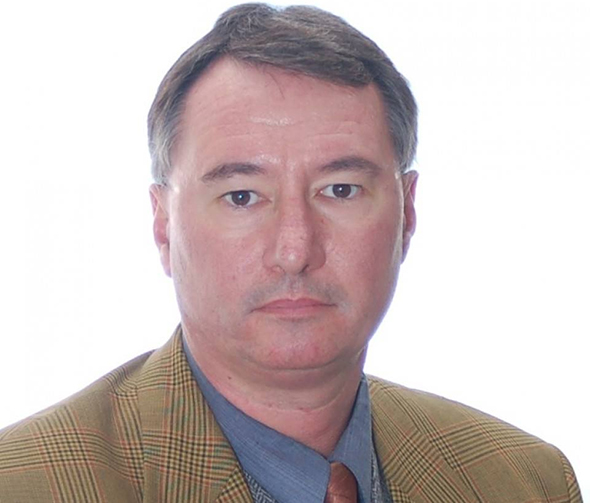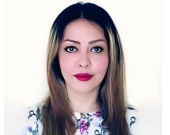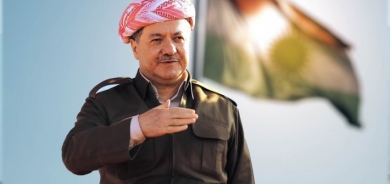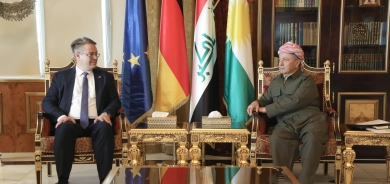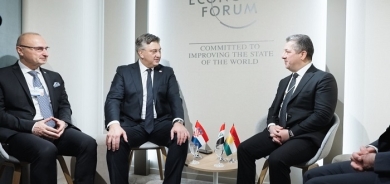Kurdistan – a brief history

Ref : Kurdistan: Genocide and Rebirth (The destruction of Kurdistan and its rebuilding )
Author: Davan Yahya Khalil
What is Kurdistan? It is a more difficult question to answer than it might sound at first. One of the hardest things for someone to do is to sum up a place. A region. Potentially an entire country. That is particularly true when it is a place they know well, because there is too much detail in what they know to ever sum it up in just a few words. Which details are the ones that will really capture the essence of a place? Which ones only skim the surface?
I could refer to some of the things that have been done to Kurdistan and my people, the Kurds, in the past. It is the way that so many people have viewed Kurdistan before, and it is the topic I intend to explore in this book. Yet to begin that way would be doing the region a disservice. It would mean that the only impression those readers who have never visited Kurdistan will get is of a region defined by the violence done to it, and that is not acceptable. Kurdistan is so much more than that.
So instead, let us begin with what a visitor to Kurdistan would see. Arriving either by air or travelling over the border by road, they would quickly find themselves at the heart of one of Kurdistan’s modern, prosperous cities. They would see the constant signs of building and probably note the wealth around them in many areas. Landing in Erbil or Sulaymaniyah, they could look around and think that they were in any of the world’s major urban centres. They would see prosperous surroundings, safe, orderly environments, and the hectic pace of ordinary life the world over.
They could see all this, in what is currently a region of Iraq.
That’s the dichotomy of Kurdistan. It has been in the middle of one of the most reported on conflicts on the planet, yet it is also a comparatively safe, booming region. It is a region that has, in a very short space of time, almost entirely reinvented itself. It is a region where there are new houses and projects going up every day, and where strong natural resources provide the potential for future growth. There are even those who are starting to refer to it as a potential “second Dubai.” All that, in an area of the world that continues to be war torn, and where surrounding countries currently face significant political, social and economic difficulties.
It’s a level of transformation that can be shocking. In 2010, I returned to the country for the first time in almost twenty years. When I left, there was literally nothing there. Not in the sense that someone in a developed Western country might say that a town or region has nothing in it; this wasn’t a case of lacking a few luxuries, or perhaps being short on opportunities for youth. Instead, there were no real hospitals. There was no airport. There weren’t hotels or universities. There were very few schools. Most of the houses consisted at least as much of earth as of modern building materials. There weren’t even good roads. All that had been destroyed. That’s how little there was when I left.
When I came back, that had changed so much it almost didn’t seem like the same place. Areas that had been literally nothing but desert were now thriving with multiple construction projects. There were two major airports in Erbil and Sulaymaniyah, and a third being started in Dohuk so that suddenly I wasn’t faced with a dangerous, hours long drive to get into the country. There seemed to be private universities everywhere I looked, with people so eager to do well that they’ve driven a boom in demand for higher education. Even abroad, you now find Kurdish students succeeding in universities in all corners of the globe.
I saw a group of children on their way to school, wearing identically neat, perfect uniforms. That probably doesn’t sound like much, but when I was a boy, I had to make do with clothes that my mother had patched up repeatedly, wearing them until they were either worn through so completely that not even she could repair them, or until I outgrew them. Now, here there were kids whose parents probably bought them a new uniform every time they found a way to tear or damage theirs.
I actually found myself feeling a little jealous of those kids. I started asking why I couldn’t have been born twenty years later, so that I could have grown up in this new Kurdistan, enjoying the kind of opportunities that they will hopefully grow up thinking of as normal. If they work hard, these kids will have all the education and opportunities they need to become doctors, lawyers, or whatever else they want. They probably won’t go hungry. They probably won’t find themselves at serious risk of harm. They will probably have a chance at a real childhood before they have to be adults.
That is the way things should be, and I’m happy to say that it is the way things are these days in Kurdistan. It’s the kind of place where children can grow up as children, then have some real opportunities as adults. In some ways, that’s the best thing you can ask of a region. Yes, there is still significant ground to be made up in some areas, such as the number of children still pushed into work by poverty, but even on those issues, the numbers have fallen dramatically in just the last few years, so that while some seven percent of Iraqi children work overall, that figure is closer to two percent for Kurdistan.
Just as importantly, Kurdistan is a place that people are proud of now. When I first went back there, my family were only too ready to drive me around and show me how much things had changed. I think they enjoyed seeing my face every time we came across something that would have been inconceivable when I left, because it meant that someone was appreciating just how far Kurdistan had come. Although it might have had something to do with just how shocked I was by the extent of some of the changes, too.
Yet it does seem to be the case in general that people in Iraqi Kurdistan are proud of the direction that their region has gone in. They want people to notice the changes. They take the same pride in a new school or area of housing that they would have if they’d had something to do with building it directly. It’s a place, not just where people have a kind of general civic pride, but where they have really bought into the idea of a region (a country in all but name) where things are advancing at a rapid rate. The claim to be a “Second Dubai” isn’t just a boast about the level of success and wealth there in some quarters. It’s a kind of goal; a clear vision of the future that they want for themselves and for Kurdistan. I’d like to think that I’ve made a lot out of myself, despite what Saddam’s regime tried to do to me, and I intend to continue doing so. Well, Kurdistan is a whole region with the same feeling.
What kinds of changes have there been in Kurdistan in the last decade or so? (I may have left in 1993, but the truth is that the biggest changes only took place after the finish of the civil war there in the late nineties, making Kurdistan’s transformation all the more remarkable).
The most visible change comes in the form of rebuilding work.
What is striking is not just the number of modern rows of apartment blocks and houses, but the fact that those areas not already rebuilt show signs of preparations for building work.
This rebuilding has often taken the form of major infrastructure projects. There are more hospitals now in the region than there ever were before, as well as a substantially increased number of schools, now teaching in Kurdish rather than simply in the Arabic imposed from Bagdad. I have already mentioned probably the most impressive elements of this infrastructure, which come in the form of Kurdistan’s major new airports. Erbil International Airport is particularly impressive, taking the site of an old military airbase and turning it into an important connection to the outside world from December 2003. By 2009, more than three hundred and fifty thousand people were coming through it per year .
As someone who now lives in the UK, I can’t help contrasting that with the difficulties that arise every time there’s a suggestion that one of the UK’s airports should be developed. In this country, there are major political rows over the redevelopment of Heathrow, the country’s biggest airport, along with consultation processes that look set to drag on for years. In Kurdistan, the construction of Erbil International Airport, from nothing to its first flights, took less than a year. There has also been significant investment in other aspects of infrastructure, from roads to more modern elements such as the provision of effective communications and ICT infrastructure.
These are the most visible elements, but there have also been major changes in other areas of life in the region. Economically, Kurdistan has boomed, growing in a way that many other regions around the globe, let alone within Iraq, can claim. With the infrastructure in place to exploit its vast natural resources, it is a region in a position to help secure the world’s oil supply with the first new drilling concessions in Iraq for many years. Better than that, because Kurdistan has enough food to feed its population, the money from these additional resources is able to go on projects to keep the region moving forward.
Socially, there have been changes too. Women play a much fuller role in public life, and have greater access to basic freedoms, than in many areas of Iraq and surrounding countries. Kurdistan has female police officers and politicians, while women are freer to act as they wish there than in the vast majority of those countries around Kurdistan. I would never claim that things are perfect there, but in things such as the ban on Female Genital Mutilation in 2011, and in continuing efforts against violence towards women, I would at least like to suggest that it is a region where attempts are being made to secure the basic rights of its female population in a way that isn’t always true of other places.
There are other areas in which Kurdistan seems to be socially ahead of many of its neighbours. The level of religious toleration in the region has been noted on several occasions, with Kurdistan’s populations of Coptic Christians and followers of Yezidism able to live without the threats of violence that they might face just the other side of the border in Iran. Kurdistan is also home to numerous ethnic groups in addition to the Kurds, including Assyrians, Roma, and more.
While there have been accusations of bias towards Kurdish interests in the region, it’s also true that the Assyrians and other groups get specific representation in the regional government, and benefit from all the advantages of a region that is largely safe. If there’s one group of people who don’t want to persecute anyone, it’s the Kurds.
Some of this might not sound perfect yet. I’d argue that very few places are perfect. I’d also argue that Kurdistan at least understands the direction in which it needs to go, and is taking active steps to get there. More than that, it is further along the road it needs to travel than almost any place has a right to be in just over a decade. It has gone from almost nothing to being one of the few safe regions in a war torn country, with a promising economic future and a present that is enough to make me stare at it in shock every time I go back there.
I’ll be going into greater detail about the rebuilding process later, but there are many factors that have contributed to the speed and completeness of Kurdistan’s rebuilding. Part of it is simply the place where it began, because in some ways it is easier to produce something from nothing than it is to change things that are already in existence.
A far more important factor comes in the form of the natural wealth, particularly in oil, that I mentioned above. Whatever you think of the role of oil in the Iraq war, we live in a world where there is a clear demand for the oil that Kurdistan is able to produce. Oil provides the money needed for the rebuilding process, even though it may also create some of the biggest challenges for the region in the future.
There’s stability, too. It may seem like an obvious point, but it is easier to rebuild in a region where the threat of violence has been reduced than in one that continues to be dangerous. Because the three main areas of Iraqi Kurdistan were some of the first to be declared stable in the wake of the Iraq wars, they have actually been in a better position to start a process of recovery than many of those around them. That has given Kurdistan an opportunity to attract investment, as well as attracting talented, innovative people from all round Iraq, who want to live in a region where they feel safe and are able to contribute to Kurdistan as an on-going project.
Then there’s the influence of the civil war. While Kurdistan is stable now, for years it was plagued by a vicious civil war where families couldn’t trust their own members, while factions fought over the future political shape of the region. It meant that for a long time, the rebuilding process couldn’t start, but once Kurdistan achieved relative stability, memories of the civil war may actually have helped to spur on successive governments in their efforts to improve the region.
All of these are important points, and ones I’ll look at further, but for me, the most important element has been the pride I talked about above. It’s the same pride that my family showed in taking me to see the new developments. It’s the kind of pride that I see there even in strangers, who take great delight in pointing out how much things have changed when they realize that I don’t normally live in Kurdistan.
It is, in a way, a kind of pride that comes out in impatience when things are wrong. Kurdistan has spent so long with things being bad that now, people aren’t prepared to wait for things to be good. Instead, they want to go out and make it happen. They want things to be better right away. They don’t want anywhere else to be a better place to live. It’s a level of aspiration that isn’t usually seen in a region, but when it is, it can utterly transform it.
It may seem at this point that I’ve been putting a lot of emphasis on the rebuilding process, as well as on how positive things are looking in Kurdistan. It may even seem a little unrealistic to focus on those aspects of a region that has been war torn in the past, and which has been the site of mass murder on an almost incomprehensible scale.
Yet I wanted to start this book by making one thing clear: Kurdistan is not a region that wants pity. The same pride that has pushed it to rebuild at a speed almost nowhere else could manage means that its people don’t want to be seen as they tend to be seen on those rare occasions when the world remembers them, simply as the victims of Saddam Hussein’s violence. That would be like viewing Jews purely in terms of the Holocaust, or the inhabitants of the various Balkan states only in terms of the atrocities of Pristina, or attacks on UN safe zones.
Kurdistan does not want pity, but it does deserve greater understanding and acceptance. It deserves an acknowledgement of the sheer scale of what it has achieved in the last decade and a half, because it achieved it in the wake of decades of officially sanctioned neglect and abuse, culminating in a campaign of violence that was essentially genocidal in nature. The region’s achievements in rebuilding only become more impressive when you consider the impact of that campaign, and the sustained, systematic destruction that it brought about.
People deserve to know about that. They need to understand, not so that they can pity the region, but simply because it helps to explain so much of the way Kurdistan has tried to improve itself afterwards. They need to understand to stop it from ever happening again. They need to understand, because it is unacceptable that a genocide that was essentially ignored by many countries around the world at the time should continue to be ignored by history.
That sounds like it should be impossible, yet even my current home country, the UK, does not officially recognize Saddam’s attempts to eliminate the Kurds as genocide. This is a country that prides itself on a strong connection to history, yet this is one element that it seems determined to forget. People I meet outside Kurdistan, meanwhile, often have little or no idea that many of the worst atrocities even happened. At best, they have a vague idea that Saddam hated the Kurds and employed chemical weapons against them, but just as often Kurdistan is confused with Kuwait, and people certainly don’t understand the details of Halabja, the Anfal campaign, or their precursors. Even the justifications for Western intervention in Iraq focussed less on the murderous humanitarian abuses of the regime than on vague concerns about WMDs that could threaten their own countries.
Part of what I’m hoping to achieve with this book is much wider recognition for everything that happened to my people under Saddam’s regime. I hope that if enough people understand what happened and why, it will help to prevent such a terrible thing from happening again. It might also be the case that sufficient public recognition of the genocide will eventually help to alter official positions on it, so that it is recognised by more than just a small number of institutions worldwide. Finally, I hope that by providing information on the way Kurdistan has rebuilt itself after these events, I can help to promote the region that has given me so much, and perhaps even help to make the case for its recognition as a country.
I also hope that I can help to fill in some of the gaps in the available literature on the genocidal campaigns against the Kurds. It seems like it should be a topic that attracts considerable attention, given the seriousness of the events involved. Yet in practice, there has been relatively little produced on it. Where there are other massacres and genocides that have produced whole miniature publishing industries, those perpetrated against the Kurds have resulted in a handful of books at best.
Some of those are very good. Michael J. Kelly provides excellent information on what is usually seen as the key atrocity of Saddam’s time in office, Halabja, while several other works, such as Susan Schuurman’s An ‘Inconvenient’ Atrocity , also focus on it. Lawrence and Bird have focussed more on Kurdistan in the aftermath, providing an outsider’s view of the rebuilding.
There are two main dangers here. The first is that we can end up seeing Halabja as the only event worth mentioning in the course of a whole campaign of genocide. By focussing on it to the exclusion of all else, we can even be left with the impression that there was no genocide, just a single gas attack. Hiltermann, for example, seems to view the rest of the Anfal as just the setting for Halabja, while many other writers do not see the Anfal as a continuation of the regime’s previous policies. Instead, I would like to argue that Halabja and even the Anfal can only be properly seen in the context of an on-going process aimed first at the containment and then the elimination of all Kurds, and particularly those from the Barzani tribe.
The second potential danger comes from being an outsider looking in, and is to some extent unavoidable. There is the academic tone of some works. Schuurman’s work, for example, is actually a published version of her MA thesis, although it should be noted that she makes a significant effort to use individual accounts. Several of the other sources for information on the atrocities in Kurdistan come from published reports by bodies such as Human Rights Watch. These represent great sources for understanding the bare historical bones of what was done and when. Perhaps even some of why. What they do not do, however, is to provide the feel of what occurred. Even though they do use individual accounts, they do not always fully understand what it was like to be there, because the authors were not there.
Indeed, in cases such as Hiltermann’s A Poisonous Affair , it seems to me almost as though they do the opposite. In striving for the historical values of objective analysis and clarity, in stepping back far enough to provide the relevant statistics to damn Saddam, they also, almost inevitably, push the reader further away from the emotional reality of what was done. The saying goes that one death is a tragedy, while a million is a statistic. There’s a possibility that by emphasising the statistical scale of this tragedy, otherwise wonderful books have achieved exactly that effect.
What can I do to avoid that? Clearly, I cannot ignore the scale of what has happened. Nor can I ignore facts and statistics where they are appropriate. I am not aiming for an academic text here though, because if it were just a question of that, then there are certainly other people out there who could do it better. Instead, I am hoping that by drawing on my personal experiences of life in Kurdistan from 1974-1991, I will be able to add a personal, individual, element to the story of what happened. I do that here not because I believe my story to be any more important than those of the many, many people who died, but simply in the hope that adding my personal recollections to a broader account will make it easier for people to connect to the reality of what occurred.
Having said that, I would like to consider one more danger in this kind of endeavour; one that I believe has affected a number of books that touch on this area. There is a real danger, particularly in books in English, that the focus of the book becomes Saddam Hussein. Certainly, many books that touch on Halabja are actually biographies of Iraq’s former dictator, or histories that focus almost entirely on what he did and when.
I believe that there are a number of reasons why this is generally the case. One is simply responsibility. Although it was not what he was tried and executed for, it is clear that Saddam gave the orders that led to the genocide against the Kurds. There is perhaps a feeling that any book about these atrocities must inevitably be about their author. I would disagree with that. While I fully intend to mention Saddam where necessary, I feel that focussing on him places attention on the decision making process, rather than on what happened on the ground.
Another reason, I suspect, is the ease of gathering information. Records from Saddam’s trial provide us with a lot, while other records relating to events tend to link back to him too. It is entirely reasonable to expect that any book following the trail of records would include a considerable amount on him. It is also reasonable to expect that individuals with a general interest in the Iraq wars would focus on him, rather than on the effects of his genocidal campaigns.
There is also a slightly more worrying question of interest. The simple fact seems to be that books about Saddam Hussein sell better than those about events in Iraq many people have not heard of, and which are in any case on topics they may feel do not affect them directly. Genocide is not, when all is said and done, a topic that everyone wishes to read about, even though I believe it to be necessary if we are to avoid something similar happening again.
Those factors combine to produce a widespread focus on Saddam rather than my people. I want to say here and now that this is not a book about Saddam Hussein. He will be included where necessary, because it would be ludicrous not to mention the author of these atrocities in connection with them. However, my focus here will be on Kurdistan, and on the experience of being caught up in the events as they unfolded, rather than on a figure who was, while hated, also largely distant.
To make this book about Saddam would be to tell a far different story than the one I want to tell here. It would be a story set in Bagdad and internationally, when the heart of this story took place in Kurdistan. The evil of the men who made decisions that cost thousands of people their lives matters. Of course it matters. But what matters more here is understanding exactly what happened to the people of Kurdistan, as well as seeing some of the strength that they displayed in the face of it. This is a book about them, rather than Saddam Hussein, and I believe that is the only way it should really be.
It is a book about me too, of course, and I’m sure there are those who will think it is arrogant of me to put my experiences down like this when talking about events that involved so many people. Please understand, I am in no way claiming that I was at the heart of these events. I was young when many of them occurred, indeed on at least one occasion it was the fact that I was so young that saved my life.
Yet as I have outlined above, I believe that it is my ability to add my personal experiences to the history of what happened that will help to make this history of what happened in Kurdistan real for you. That is why I have included my memories. It is also why I have included a number of personal opinions on the factors behind particular events. I am not claiming that my personal opinion constitutes historical truth. Nor am I claiming to be in possession of facts about Kurdistan that other people do not have. I am simply presenting my view of what happened and while I hope my opinions make sense to you, I mostly hope that they will help you to see how events looked to those of us caught up in them.
That means, inevitably, that the structure of this book will be a little unusual. My personal experiences will be caught up with more general observations on historical events, and with my opinions on the ways those events came into being. In several instances, I have taken the time to explore what I believed to have been the case even when later evidence has shown something else to be true. In that way, I hope to ground the information here in my experience, and also to demonstrate the differences between what the evidence suggests and what appeared to be true at the time. I will, of course, try to be clear about what is my opinion and experience, and what is established fact.
So, how do I intend to go about explaining the whole of the genocide against the Kurds? I plan to start by explaining what I feel is necessary background. Those who know the region may not find that necessary, but it is my hope to bring this genocide to the attention of those who do not have an existing stake in Kurdistan, so I hope that you will bear with me if you are familiar with it. It is also necessary if we are to understand the context of the violence.
Then, I will explore the displacement of the Kurds and my own experiences of being put into one of the camps built to contain us. I will explore life in the camps, and what it was like day to day to live knowing that the government hated us. I will look at the taking of more than eight thousand men and boys from the camps, and their probable fate. I will do this partly because these events deserve never to be forgotten, but also to show that they were connected to the process and thinking that produced the Anfal.
I will, of course, examine what happened at Halabja. It is impossible not to, but I will also explore the impact of the wider Anfal campaign, as well as looking at what it meant for those of us already trapped by the regime. I will explore what we knew about it, what it meant for us from day to day, and the fears that came along with it. I hope to show that the Anfal mirrored some of the wider tactics used previously, that it was a genocide, and that the regime’s propaganda misled popular understanding of what was going on.
Because this is a book about Kurdistan, however, I will also explore the way the hardest times ended. I will look at my people’s escape from captivity, at the civil war that followed, and at the efforts that have occurred since to rebuild the region. Kurdistan’s history is about so much more than just what was done to it, after all.
Yet there are hard questions that need to be asked, and I plan to ask them here. Why has what happened to my people not been fully recognised as genocide, when it fits in with the pattern of genocides the world over? Why was it allowed to happen by individuals within Iraq, by Iraq’s neighbours, and by the international community? Could it ever happen again in Kurdistan, and what does the future hold for the region?
This is a lot to attempt to answer in a relatively short space, and in some ways this is a complex book. It is my story and my people’s story rolled into one. Yet I continue to believe that is essential. Because if, as the saying insists, a million deaths is just a statistic, one life will have to make you see more than that. If there is one thing I hope that you will understand, having read this book, it is simply that every life taken in Kurdistan was that of a human being, probably loved, certainly missed. Yet despite it all, Kurdistan has still rebuilt.
How many places can say that?

